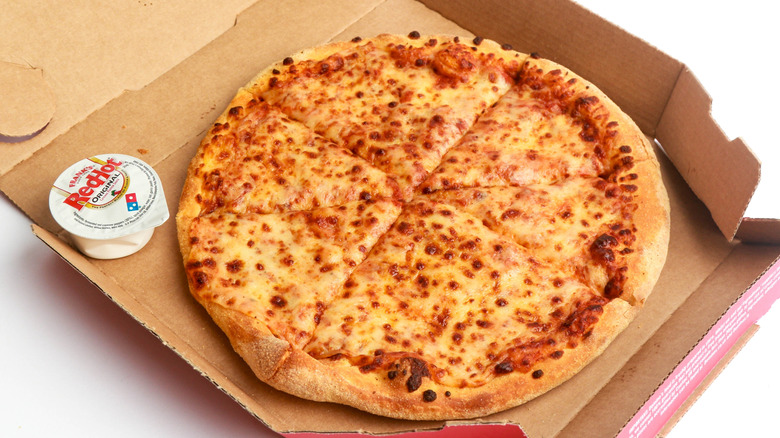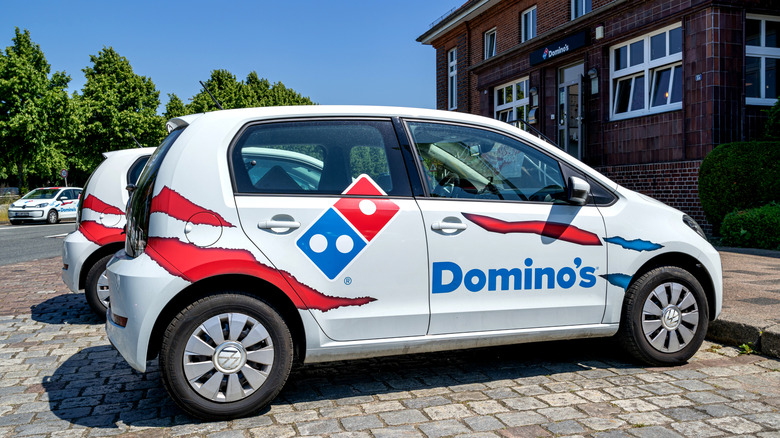The Unfortunate Reason Domino's Ditched Its '30 Minutes Or Less' Pizza Delivery Guarantee
Domino's Pizza has brought so many wonderful things to our lives: stuffed cheesy bread, cinnamon bread twists, their cheesy loaded tots appetizer, and gooey chocolate lava cakes — just to name a few. But one thing they can't deliver on is guaranteeing a pizza delivery in 30 minutes or less. This marketing gimmick actually came out back in 1979, and it soon became a defining part of its brand identity. But, less than 15 years later, Domino's shut down the policy. The reason why involves various legal challenges and safety concerns that nearly ruined the brand's reputation. Delivery drivers' dangerous driving and the crushing pressure on franchises to bake and deliver a pizza in under half an hour proved literally fatal. Domino's drivers ended up causing numerous accidents, lawsuits, and even deaths.
Domino's very first business model was based on speed and delivery. The founder, Thomas Monaghan, had one of those true rags-to-riches stories. While an architecture student at the University of Michigan, he impulsively decided to buy a small pizza shop with his brother. His pizza business specialized in delivery to college campuses, and was highly successful thanks to Monaghan's new insulated pizza box invention, that revolutionized pizza delivery around the world. By the 1980s, Domino's was a billion-dollar company, and the concept of delivery was becoming more mainstream and desirable, thanks to a changing workforce and the growing appeal of ordering in.
Domino's need for speed
In 1986, Pizza Hut (Domino's long-time "Pizza Wars" rival) took on a delivery model as well. Thanks to Domino's domination, home delivery had become the fastest-growing sector in fast food. This competition only made Domino's Monaghan even more determined to become the best in the business. His promise of "30 minutes or it's free" was now their entire business model. Cooking and delivering a pizza in under 30 minutes is no small task, and both managers and delivery drivers felt the pressure. By 1989, news outlets reported that Domino's drivers were involved in a reported 20 fatalities. Shockingly, upper management didn't seem to care. In fact, Monaghan had announced in the company's annual report that the 30-minute guarantee was the restaurant's biggest priority.
It wasn't until lawyers began suing the company itself, instead of the poor teenage drivers, that things began to change. A petition was also circulated after one teenage driver died trying to deliver a pizza on time. After a St. Louis jury awarded one woman $79 million for severe injuries resulting from a Domino's-caused crash, the pizza behemoth finally took notice. In 1993, Monaghan admitted that this court case, even though he still planned to appeal, was what made him rescind the 30-minute guarantee. Regardless, the concept of instant gratification and fast, free delivery had fully captured the American imagination by then (even if naysayers argue that Domino's isn't actually pizza).

